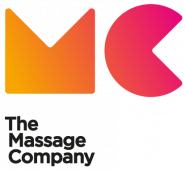Stiff neck? Sore back? Poor posture? Creaking hips? It’s not surprising, given that most of us spend eight hours a day (at least) hunched over our workstations – and when we do exercise, we spend little more than five minutes focussing on stretching, hurrying instead to squeeze in as much cardio as we can.
Modern life just isn’t kind to our muscles, and most of us wish we were more flexible, especially when we see wellness influencers and celebrities folding themselves into pretzels on TikTok.
So, what can you do about it? If you really want to tackle your flexibility, former professional dancer and yoga instructor Leanda Mace has some tips on keeping agile whatever your age or lifestyle. Here’s what she had to say:
Stretch every day
I was never as naturally flexible as the other girls I danced with, even though we all did the same stretches and the same exercises, every day. If you have shorter muscles, you need to work harder to keep them supple. The first step: stretch a small amount, every day, without fail. Make it part of your morning or evening routine, or build it into your work breaks.
Tackle fascia tension
Fascia is the connective tissue that wraps around muscles – a bit like skin on a sausage – and it can get really tight, especially after a work-out. To release it, use a spiky massage ball or roller and roll it along the affected area – let’s say, your hamstrings. It’s not comfortable. It can be painful. But it feels amazing afterwards, and you’ll think, “my god, I had no idea my muscles were so tight!”
Understanding lactic acid
Lactic acid is a toxin that builds up in the muscles. It can be caused by physical activity, or mental stress, and it feels horrible. If you do have lactic acid build-up, the best thing is to have a rest day: get a massage in the morning to improve circulation and get fresh, oxygenated blood to your aching muscles, then take it easy and recover. I have a massage subscription with The Massage Company so that I make sure I build this into my routine regularly. If that’s not an option – as was often the case when we had a show or intense rehearsal schedules – a trigger point massage can help. Work your fingers and thumbs into your muscles to release that lactic acid and get your muscles feeling more mobile.
Warm up (literally)
Why do you always see dancers wearing leg warmers and body warmers? It’s not because it looks nice. It’s to keep their muscles warm while they work. Once your muscles are warm, you are much less likely to do yourself an injury. If you’re going for a run, and it’s cold, stay in the warm for your initial stretches. After your exercise, put your layers back on to warm down afterwards. Stretching after a hot bath, when your muscles are super warm, is even better.
Think ‘lengthening’ not ‘stretching’
In my classes, I never use the word ‘stretch’. I always refer to it as ‘lengthening’ muscles. It’s a softer approach, and it changes your mindset from something that’s seems quite harsh and difficult to something that’s more achievable.
Hold and breathe
When stretching, hold your stretch that little bit longer, and breath through it. Just that small movement makes a huge difference, but it’s not brutal, you’re not bouncing, like in those old Jane Fonda videos. You’re just taking yourself to the edge of your stretch – where it’s uncomfortable, but not painful – and getting into a breathing pattern. Here’s an example: sit with your legs open, and try to get your elbows on the floor. If you’re not at your most flexible, it is difficult. But rather than push yourself, build a block in front of you – pillows, a rolled-up blanket, exercise blocks if you have them – and rest your arms on them. Then just breathe into the stretch. Eventually, with practice, you’ll probably find you can start to take some of those cushions away.
Take your time
People have a tendency to go ‘too hard, too fast’. Social media doesn’t help, as it gives an unfair ideal of what ‘flexible’ should look like – you don’t need to have your leg over your head to feel agile, or feel good in yourself. There’s often this idea that fitness, including flexibility, needs to be gruelling. It doesn’t. Be kinder to those muscles, you’re expecting a lot from them! Take your time and work on your flexibility gradually.
Work out a good stretch to exercise ratio
A cursory five-minute stretch is not enough to limber up your muscles for an hour long run, yet we’re all guilty of squeezing our warm-up and warm-down into our schedule, instead of really focussing on it as part of our routine (normally, because we are always rushing). Make sure you develop a good warm-up/warm-down to exercise ratio and give yourself some time to stretch out slowly.
So there you have it, eight ways that you can start focussing on your flexibility for better posture, stronger muscles, improved mobility – and maybe even a better chance at nailing the next TikTok flexibility challenge. But remember Leanda’s advice: don’t push it, go at your own pace and make flexibility feel good for you.


